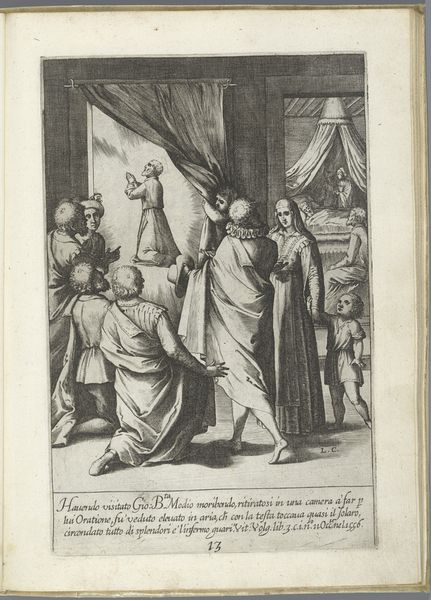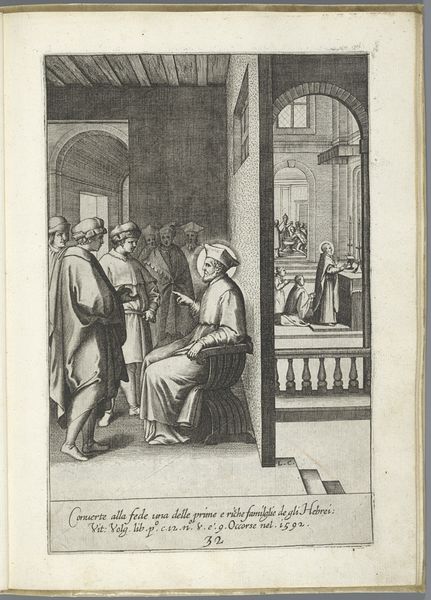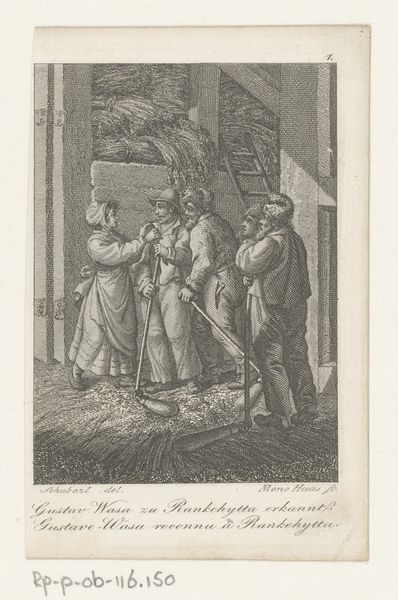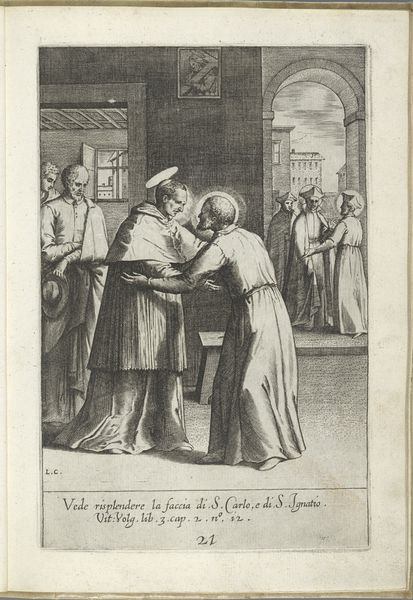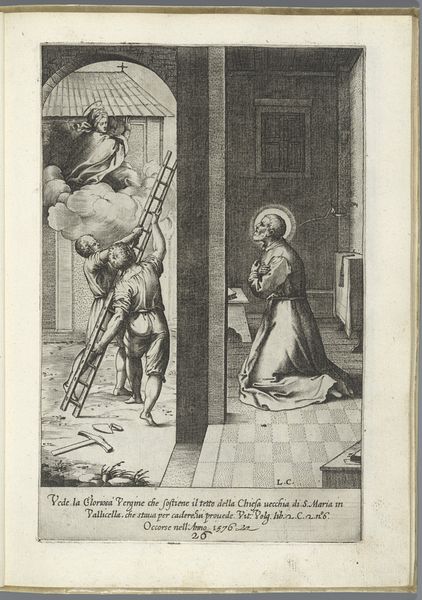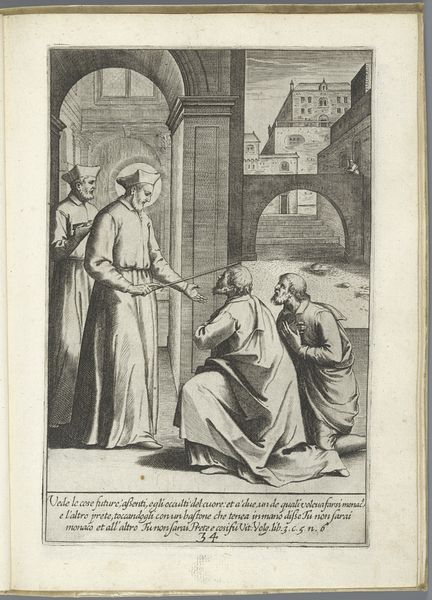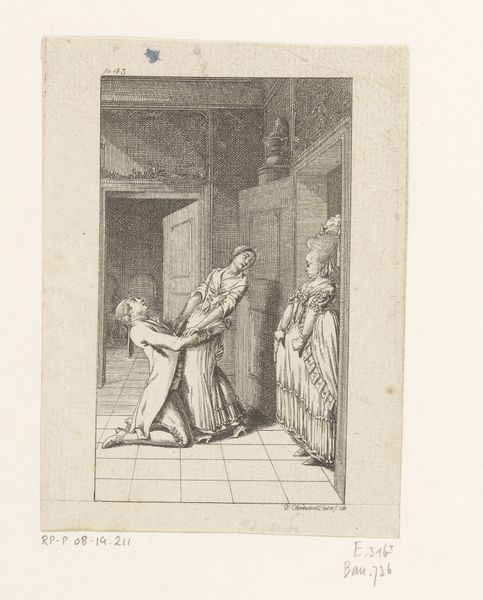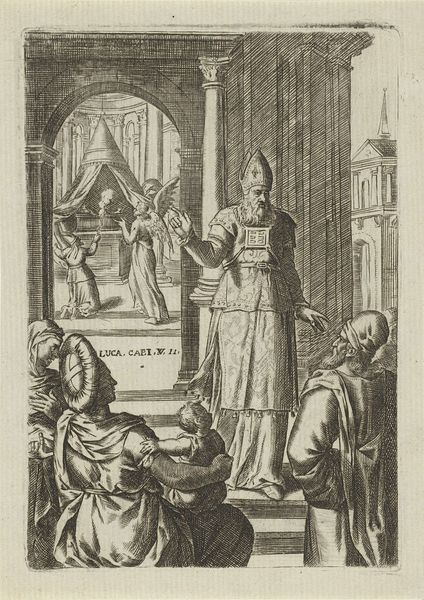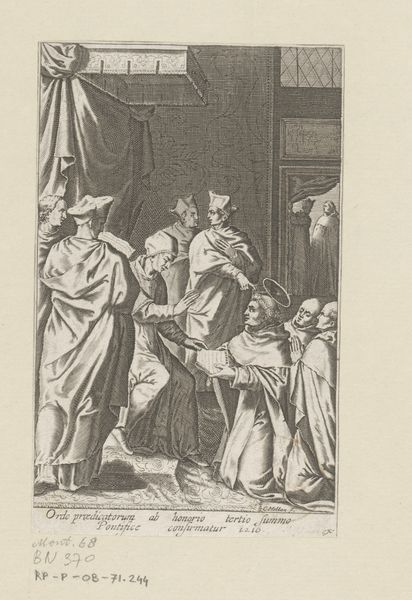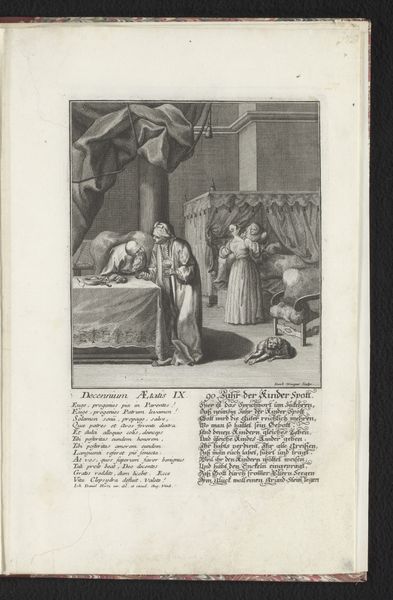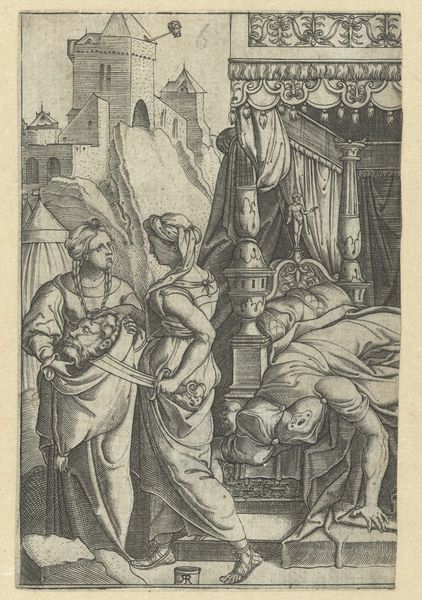
Filippo Neri biddend in zijn kamer tijdens het bezoek van de prostituees 1630 - 1641
0:00
0:00
lucaciamberlano
Rijksmuseum
etching
#
aged paper
#
toned paper
#
baroque
#
etching
#
sketch book
#
figuration
#
personal sketchbook
#
pen-ink sketch
#
pen work
#
sketchbook drawing
#
watercolour illustration
#
history-painting
#
storyboard and sketchbook work
#
sketchbook art
Dimensions: height 228 mm, width 150 mm
Copyright: Rijks Museum: Open Domain
Editor: Here we have Luca Ciamberlano’s "Filippo Neri biddend in zijn kamer tijdens het bezoek van de prostituees," an etching created sometime between 1630 and 1641. It depicts a rather theatrical scene. The architectural rendering with sharp perspective pulls me in. How do you see the composition working in this print? Curator: The spatial organization immediately draws the eye. Note the crispness of line, and the use of varying densities of hatching to create tonal gradations. Observe how the orthogonals converge toward a vanishing point that lies just beyond the doorway, skillfully guiding our vision through the architecture of the interior. Editor: So, the receding space isn't just about creating depth but about directing the viewer's attention. Curator: Precisely. The very clear spatial structure emphasizes the tension between the kneeling figure, presumably Filippo Neri, and the figures at the doorway. The artist constructs a visual binary opposition through spatial and perspectival relationships, framing our perception and intellectual reading of the scene’s moral dynamic. Editor: It's interesting to focus on the architectural structure as a language in itself. I wouldn’t have picked up on such formal devices. Curator: These carefully arranged visual elements actively shape our engagement with the narrative itself. Notice the statue. What might that reveal about compositional strategies? Editor: It's like a punctuation mark in the upward movement implied by the stairs. I see the figures on the stair as well, it gives a secondary almost celestial scene, which highlights the difference between the "bad women" and Filippo Neri. Curator: It shows the dynamism between classical ideals of form and the tension in everyday reality. Editor: Now I look again and the interplay of lines and form is amazing. Curator: Yes, and remember how these elements come together is ultimately the meaning the artist communicates to us.
Comments
No comments
Be the first to comment and join the conversation on the ultimate creative platform.

